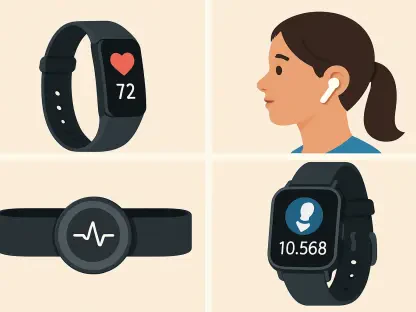In today’s conversation, we’re joined by Nia Christair, a recognized expert in mobile technologies, including mobile gaming and app development, device and hardware design, and enterprise mobile solutions. Our discussion focuses on the emerging Pulse Detection feature on the Pixel Watch 3, its unique attributes, regulatory hurdles, and its implications for personal health and safety.
Can you explain the Pulse Detection feature on the Pixel Watch 3? How does this feature work exactly? What kind of health metrics does it constantly monitor?
The Pulse Detection feature on the Pixel Watch 3 is designed to continuously monitor critical health metrics such as heart rate. If it detects a significant drop in pulse or a non-sustaining heartbeat, the watch will automatically contact emergency services. It also tracks other metrics like sleep and general activity levels to give a holistic view of the user’s health.
What sets the Pulse Detection feature on the Pixel Watch 3 apart from similar features on other smartwatches? Are there other smartwatches that offer similar life-saving features? How reliable is the Pixel Watch 3’s Pulse Detection compared to others?
The distinguishing factor of the Pulse Detection feature on the Pixel Watch 3 is its accuracy and rapid response in critical moments. While other smartwatches have heart rate monitors and emergency alerts, the Pixel Watch 3’s feature is particularly advanced due to its precise monitoring and FDA certification, which speaks to its reliability.
How crucial was the FDA (Food and Drug Administration) certification for the launch of Pulse Detection? What challenges did Google face in gaining this certification? Can you provide examples of devices or features that were affected by the lack of FDA approval?
FDA certification was essential for the Pulse Detection feature because it ensures reliability and safety, which are critical for life-saving technology. Google faced challenges in rigorous testing and validation to meet FDA standards. A notable example affected by the lack of approval is the ECG tool on the OnePlus Watch 3, which is unavailable to users in North America due to missing certification.
Why did Google choose to launch the Pulse Detection feature in the UK first? Are there different regulatory hurdles in the UK compared to the U.S.? How did the UK users react to the initial launch?
Google likely chose the UK as a testing ground due to differing regulatory processes that might be less stringent or quicker than the FDA in the US. The initial launch in the UK was met with positive reception, as users appreciated the added layer of health security.
In which countries is the Pulse Detection feature currently available? When will this feature be available in the U.S.? Are there plans to roll it out to more countries soon?
As of now, Pulse Detection is available in 14 countries and is expected to arrive in the U.S. by the end of March. Google plans to expand the feature to more countries, reflecting the global demand for enhanced personal health monitoring tools.
How does the Pixel Watch 3 handle emergency situations if it detects a severe health issue? What specific information does it provide to emergency services? Does it use the address on file or the watch’s current location?
In case of a detected health emergency, the Pixel Watch 3 contacts emergency services, providing them with the user’s current location and possibly the address on file. This dual approach ensures that responders can reach the individual quickly, irrespective of their immediate whereabouts.
What advice would you give to current owners of older Pixel Watch models who are interested in the Pulse Detection feature? Is there any possibility that older models might receive this feature through a software update? What are the advantages of upgrading to the Pixel Watch 3 for health monitoring?
For owners of older Pixel Watch models, upgrading to the Pixel Watch 3 is advisable as the Pulse Detection feature is hardware-dependent and unlikely to be added through a software update. The new hardware offers advanced health monitoring capabilities and improved accuracy, making the upgrade worthwhile.
How important do you think smartwatches are becoming in terms of personal health and safety? Are there any other upcoming features for Pixel Watch 3 that can enhance personal health monitoring? How do you see the future of smartwatches in the health tech industry?
Smartwatches are becoming increasingly vital for personal health and safety by providing real-time health monitoring and emergency response capabilities. Upcoming features for the Pixel Watch 3 are likely to include additional sensors and software enhancements to broaden health insights. The future of smartwatches in the health tech industry looks promising, with continuous advancements making them indispensable personal health devices.
Do you have any advice for our readers?
My advice to readers is to stay informed about the capabilities of their wearable technology and consider upgrading to devices that offer critical health and safety features. These tools can be life-saving and provide peace of mind, especially for those with pre-existing health conditions or active lifestyles.








